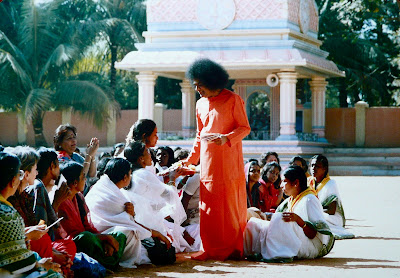Nisargadatta Maharaj - Excerpt from 'Pointers' by Ramesh Balsekar
The highest truth can be found in the teachings of Nisargadatta Maharaj, a barely-educated tobacco-kiosk owner who died in Bombay in 1981. The classic book of his teachings is 'I Am That' transcribed and translated from his native Marathi by Maurice Frydman. There are also fine books on his teaching such as 'Pointers' by Ramesh Balsekar and those of Jean Dunn and Robert Powell . 'The dialogue, one evening, was started by a young Canadian, wearing a lunghi and a thin kurtha. He said that he was twenty-three, but looked barely out of his teens. He wore around his neck an elegant little silver cross on a dainty chain. He said that he had come across the book I Am That in a bookshop in Bombay a couple of days ago. A cursory glance at a few pages impelled in him a desire to meet Maharaj personally. He had already gone through the book reading almost continuously, through the afternoon, evening and night, and had finished both volumes only a few hours ago. Mah
